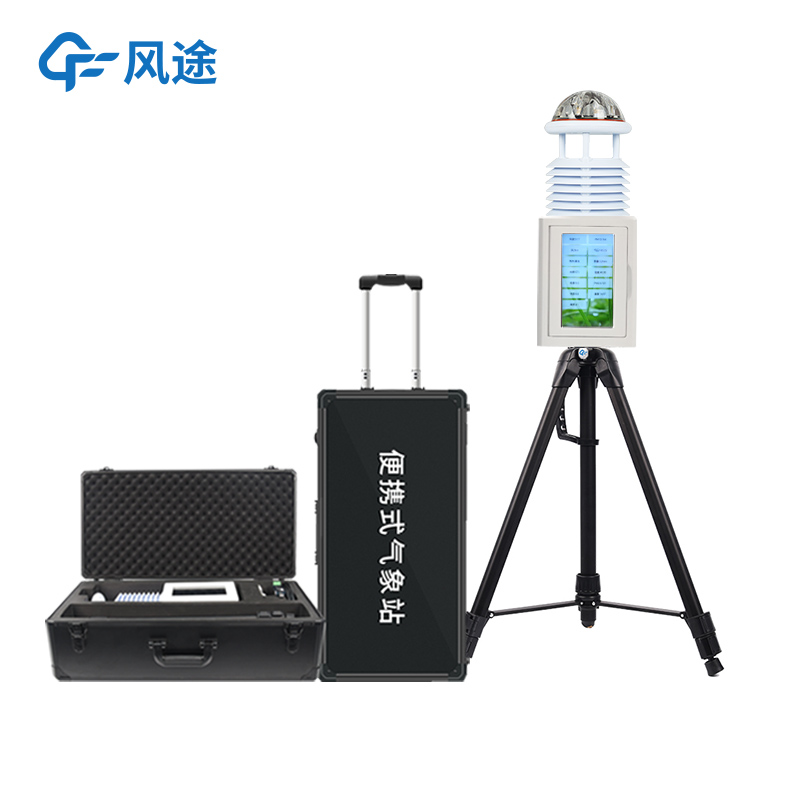Shandong Fengtu IOT Technology Co., Ltd
Sales Manager:Ms. Emily Wang
Cel,Whatsapp,Wechat:+86 15898932201
Email:info@fengtutec.com
Add:No. 155 Optoelectronic Industry Accelerator, Gaoxin District, Weifang, Shandong, China

Sales Manager:Ms. Emily Wang
Cel,Whatsapp,Wechat:+86 15898932201
Email:info@fengtutec.com
Add:No. 155 Optoelectronic Industry Accelerator, Gaoxin District, Weifang, Shandong, China
time:2025-02-13 09:09:28 source:Weather Station viewed:232 time
In emergency response, meteorological conditions have a significant impact on rescue operations. Conducting emergency drills with a Portable Weather Station can make the drills more realistic and effectively improve the emergency response level. The entire process can be divided into three key stages: preparation, drill, and evaluation.
Preparation Stage
It is necessary to select the right weather station according to the type of drill and the site environment. For example, for forest fire drills, choose equipment that can accurately measure temperature, humidity, and wind speed. For flood disaster drills, focus on equipment with high-precision rainfall measurement. After selection, comprehensively check all components of the equipment, battery power, and sensor calibration to ensure the normal operation of the equipment. At the same time, clarify the drill objectives, plan the types of simulated meteorological disasters, the occurrence locations and times, and reasonably assign tasks to the participating personnel to ensure that everyone performs their duties.
Drill Stage
After arriving at the scene, place the weather station in an appropriate position and start collecting data. According to the pre - arranged plan, create specific meteorological scenarios through equipment settings or software simulation. For example, when simulating heavy rain, set the precipitation intensity, duration, temperature, and humidity. When simulating strong winds, set different wind speeds and directions. Arrange a dedicated person to monitor the data, use GPRS or other means to transmit the data to the emergency command center, and the staff analyze the data with special software. The participating personnel make emergency responses based on the meteorological data. The rescue team determines the rescue route and material drop points, and the commanders adjust the rescue strategy according to the changes in the data.
Evaluation Stage
After the drill, review the data collected by the weather station, evaluate the equipment performance, check for transmission problems, summarize the deficiencies in data collection and processing, and propose improvement measures. Comprehensively evaluate the drill effect from aspects such as the timeliness of emergency response, the scientific nature of decision - making, and the degree of departmental cooperation. Analyze the supporting role of meteorological data in decision - making, summarize experience and lessons, so as to be more calm in dealing with emergencies in the future.

Small automatic weather stations are an important part of the meteorological monitoring and management platform, and they play a crucial role especially in the information release subsystem. Before the arrival of meteorological disasters, small automatic weather stations can quickly release early wa...
According to the relevant regulations of the "Good Manufacturing Practice for Pharmaceuticals" (GMP) and the "Good Supply Practice for Pharmaceuticals" (GSP), drugs that are prone to deterioration in high-temperature environments must be stored in a low-temperature environment of...
In daily life, air quality is closely related to our health, and negative oxygen ions, as an important indicator of air quality, play a crucial role. Negative oxygen ions are formed due to various natural phenomena, such as solar radiation, lightning activities, water wave impacts, and plant photosy...
Chemical plant explosion-proof weather stationModel: FT-FB01Manufacturer: Shandong Fengtu Internet of Things Technology Co., Ltd.Product features: FT-FB01 is a new generation of industrial-grade meteorological observation equipment based on ultrasonic series sensors. It adopts a modular design metho...